
The Vietnam Railways building today
This article was published previously in Saigoneer http://saigoneer.com
The iconic Bến Thành Market is not the only Saigon landmark currently celebrating its 100th birthday – this week we take a look at the history of the Vietnam Railways building at 138 Hàm Nghi, which also opened in 1914.
When construction of the southernmost section of the Transindochinois (North-South) railway line got under way in 1904, it was envisaged that the existing terminus of the Saigon-Mỹ Tho line at the riverside end of rue de Canton (modern Hàm Nghi boulevard) would serve both lines. However, when the first northbound trains began operating, the colonial authorities realised that a larger station was required (for a more detailed history of the railway station, see The changing faces of Saigon railway station).
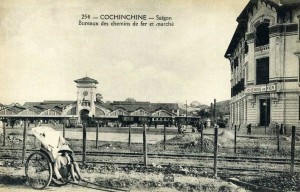
An early 20th century image of the Chemins de fer de l’Indochine (CFI) building with the Halles centrales in the background
In 1910, a scheme was drawn up under Saigon mayor Eugène Cuniac to reroute both railway lines as they entered the city centre, building a larger Sài Gòn Railway Station in reclaimed swamp land to the west and demolishing an old locomotive depot to free up land for the construction of a new central market and spacious city square.
The project was beset by delays, but the Halles centrales (modern Bến Thành Market) finally opened on place Eugène Cuniac (now Quách Thị Trang square) in March 1914 and the second railway station on the site of today’s 23-9 Park in September 1915.
As part of this scheme, the Chemins de fer de l’Indochine (CFI) built itself an imposing new southern region railway headquarters on place Eugène Cuniac, right opposite the station entrance. It was inaugurated in 1914, a full year before the opening of the new railway station. Each level of the ornate three-storey building incorporates a spacious outer corridor which shields the offices from the heat of the external walls.
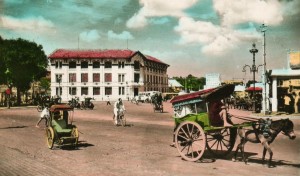
A colorised late colonial image of the CFI building
In May 1952, when CFI became the Việt Nam Department of Railways (Sở Hỏa xa Việt Nam, HXVN), the railway building became its southern branch headquarters. Just three years later, HXVN became the southern rail operating company, responsible to the South Vietnamese Ministry of Public Works and Transport.
During the 1960s the railway headquarters acquired a certain notoriety after the sidewalk outside the building was turned into a place of execution.
Today the building functions as the Hồ Chí Minh City branch office of Vietnam Railways.
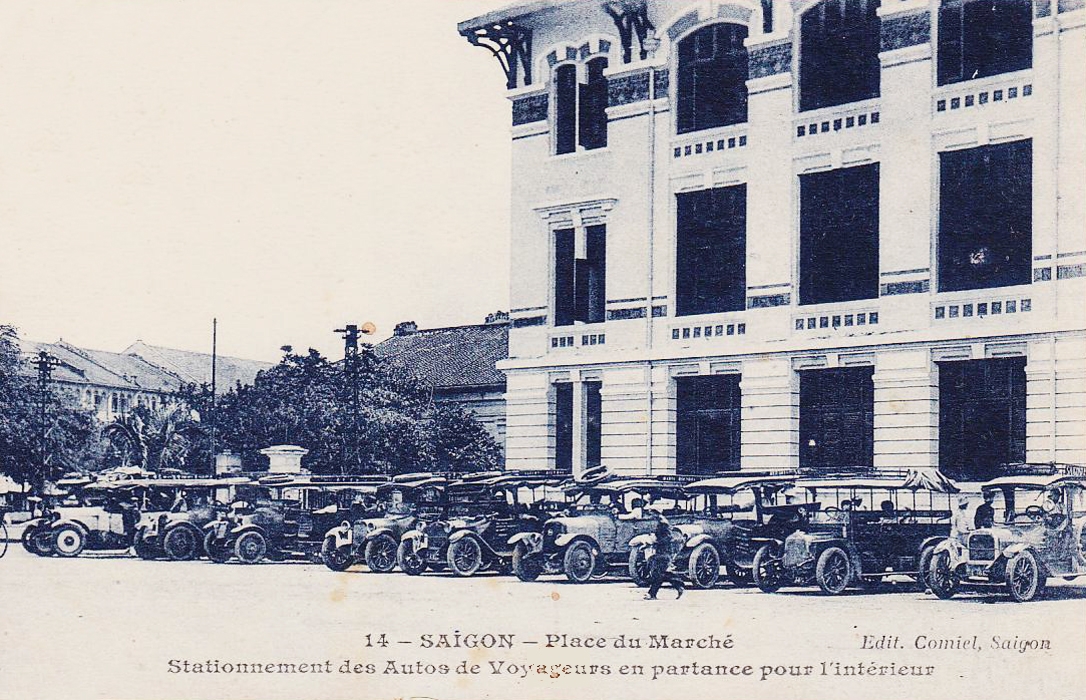
Colonial taxi rank
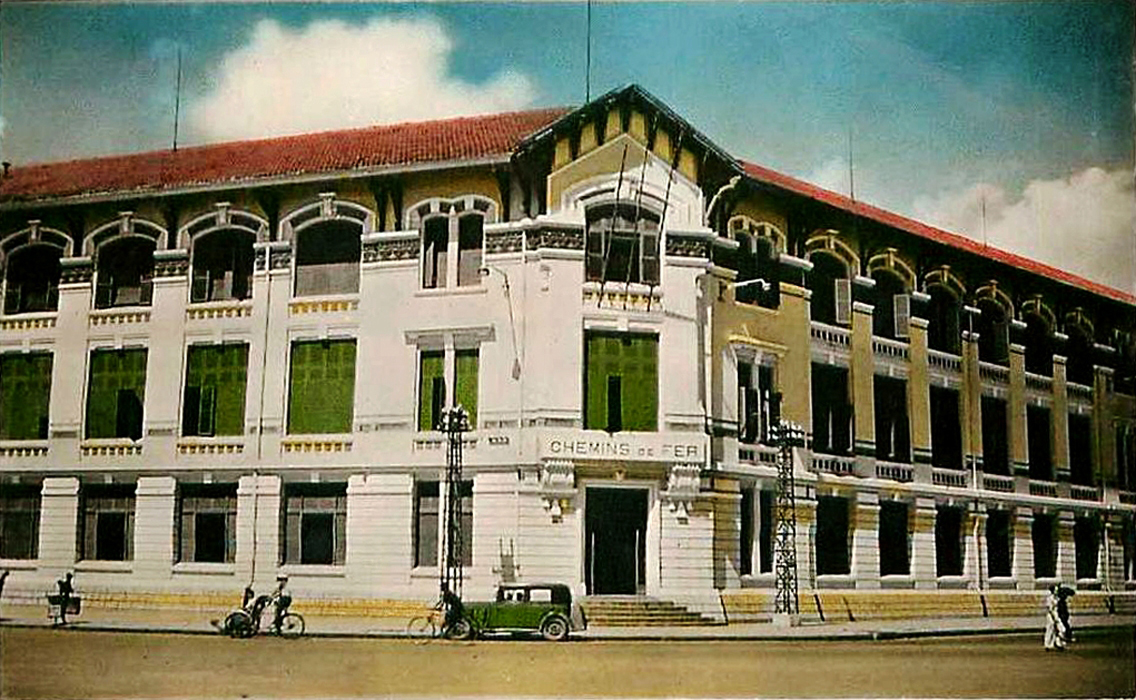
Another colorised late colonial image of the CFI building
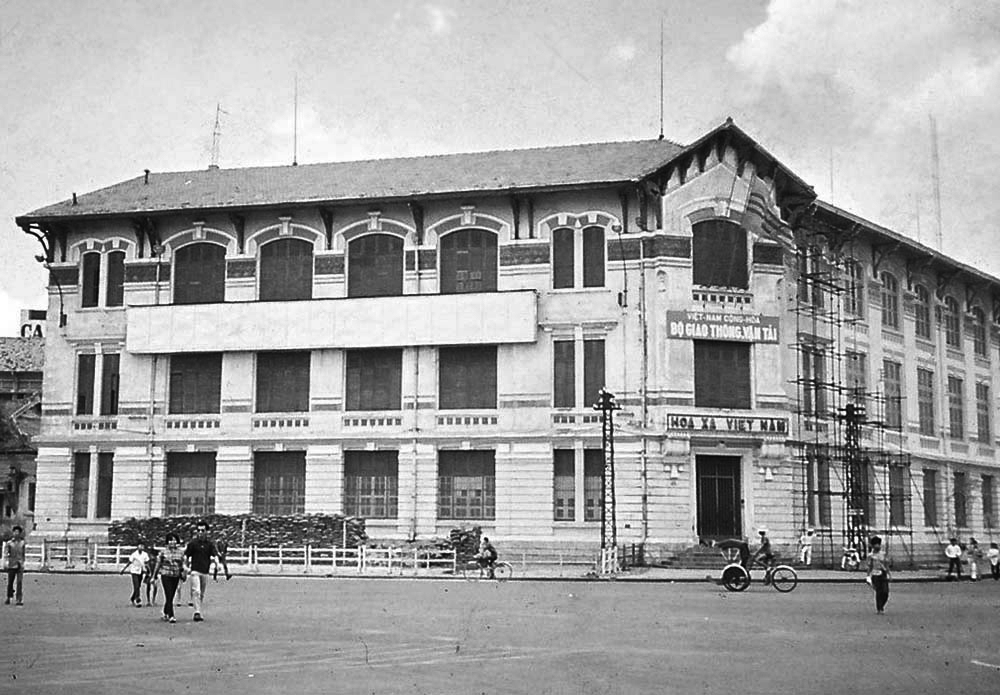
A 1960s shot of the building as the headquarters of Hỏa xa Việt Nam (HXVN)
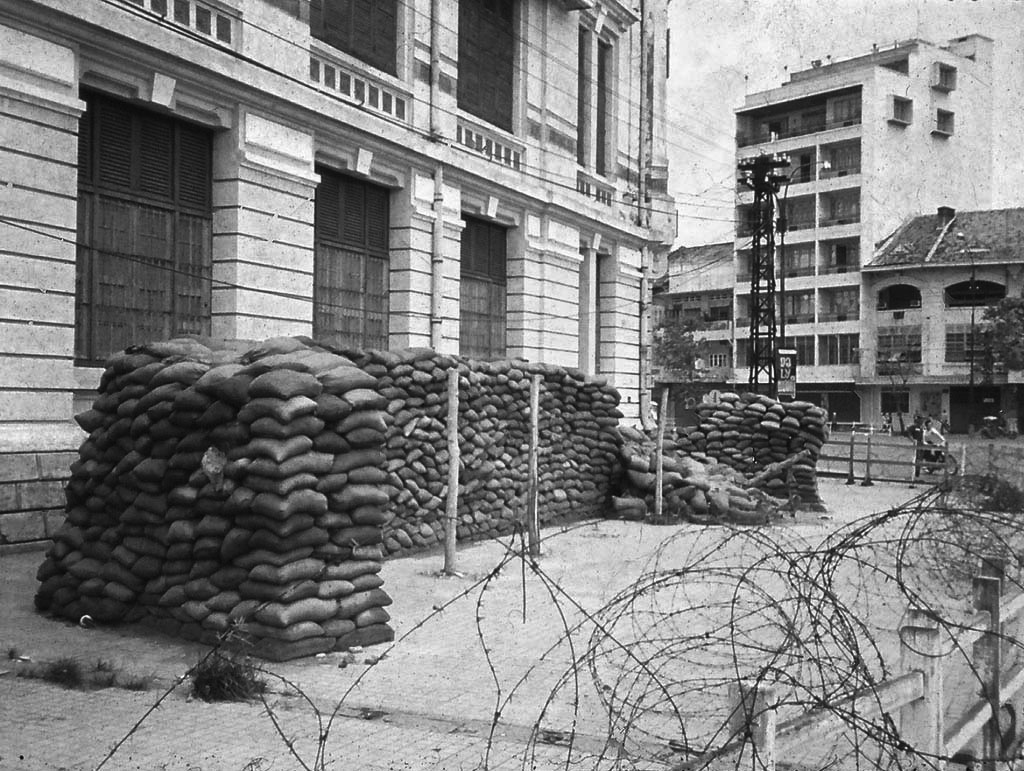
During the 1960s the sidewalk outside the building became a place of execution
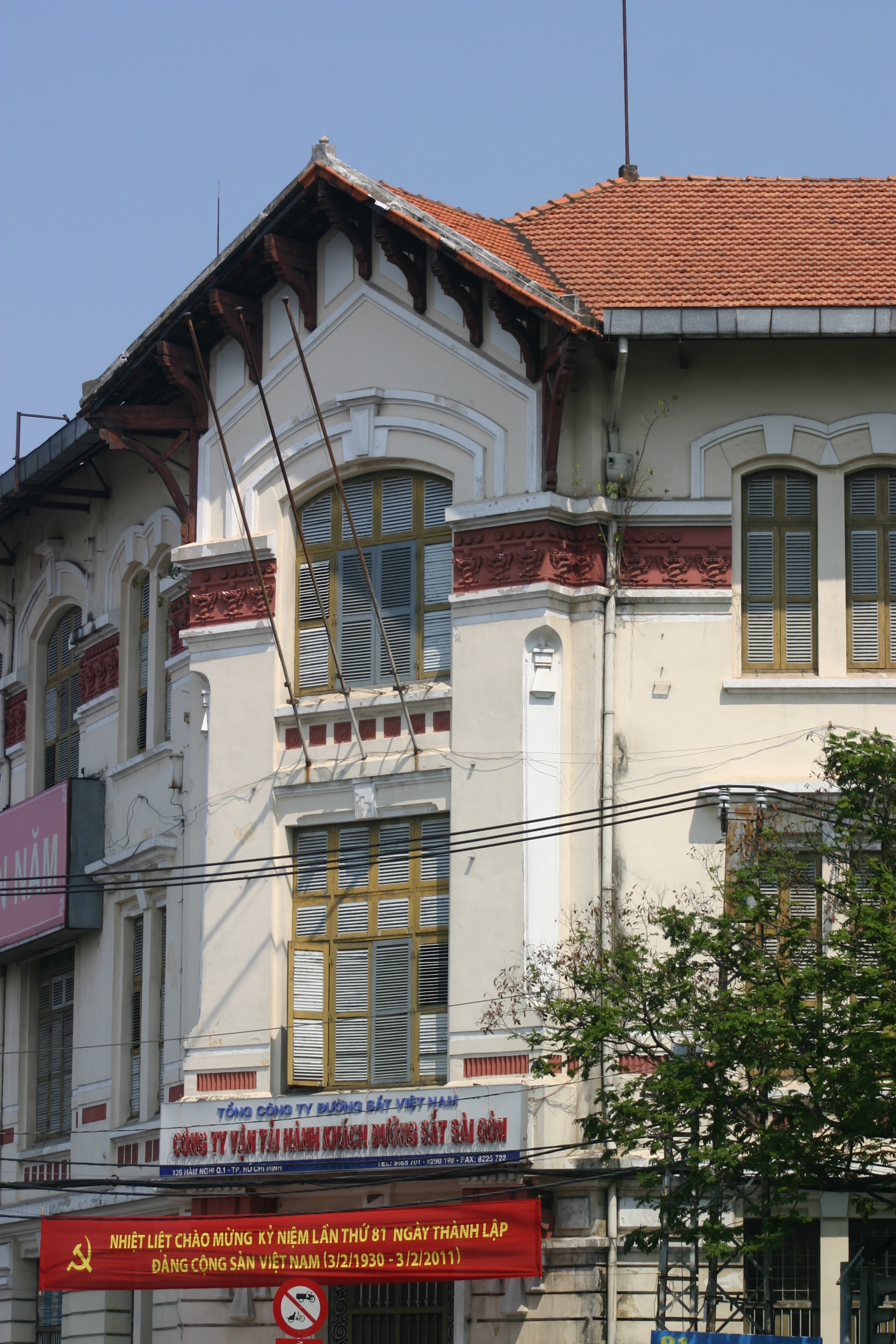
A present-day shot of the façade of the Vietnam Railways building
Tim Doling is the author of the guidebook Exploring Saigon-Chợ Lớn – Vanishing heritage of Hồ Chí Minh City (Nhà Xuất Bản Thế Giới, Hà Nội, 2019) and The Railways and Tramways of Việt Nam (White Lotus Press, Bangkok, 2012)
A full index of all Tim’s blog articles since November 2013 is now available here.
Join the Facebook group pages Saigon-Chợ Lớn Then & Now to see historic photographs juxtaposed with new ones taken in the same locations, Đài Quan sát Di sản Sài Gòn – Saigon Heritage Observatory for up-to-date information on conservation issues in Saigon and Chợ Lớn, and Rail Thing – Railways and Tramways of Việt Nam for more information about Việt Nam’s railway history and all the latest news from Vietnam Railways.

